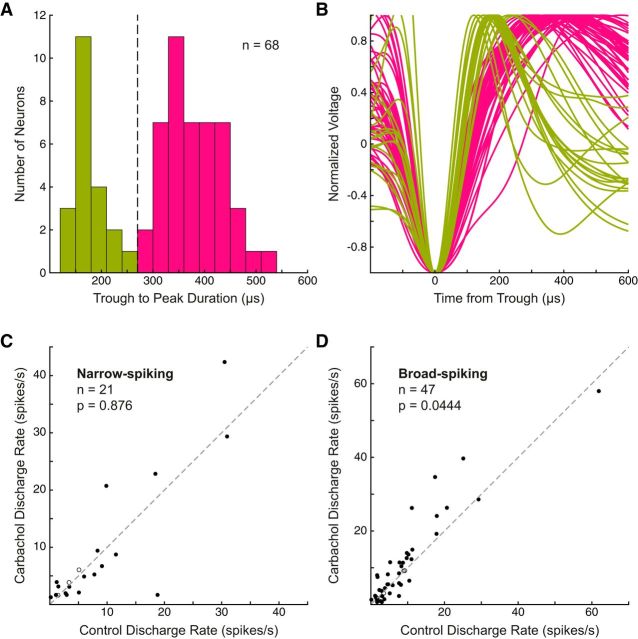Figure 5.
Effects of carbachol on putative pyramidal and nonpyramidal neurons. Waveforms were extracted and trough to peak duration was measured in 68 neurons (see Materials and Methods). A, Histogram of trough to peak durations. Trough to peak duration distribution was not unimodal as determined by Hartigans' Dip Test (p = 0.00910). Similar to previous reports, a threshold of 270 μs (dashed line) was used to classify neuronal waveforms as narrow-spiking (green, putative nonpyramidal neurons) or broad-spiking (pink, putative pyramidal neurons). 30 μs bin width. B, Normalized waveforms aligned to initial trough (negative inflection) are shown with narrow-spiking (green) or broad-spiking (pink) label. C, Discharge rates among narrow-spiking neurons were not significantly affected by carbachol (entire epoch, p = 0.876, Wilcoxon signed rank test). Shown as filled circles, discharge rates of 8 neurons (38%) were significantly excited (p < 0.05, Wilcoxon rank sum test) and 10 (48%) were significantly suppressed. D, Broad-spiking neurons were significantly excited by carbachol (p = 0.0444, Wilcoxon signed rank test). Discharge rates of 27 neurons (57%) were significantly excited (p < 0.05, Wilcoxon rank sum test) and 16 (34%) were significantly suppressed.

